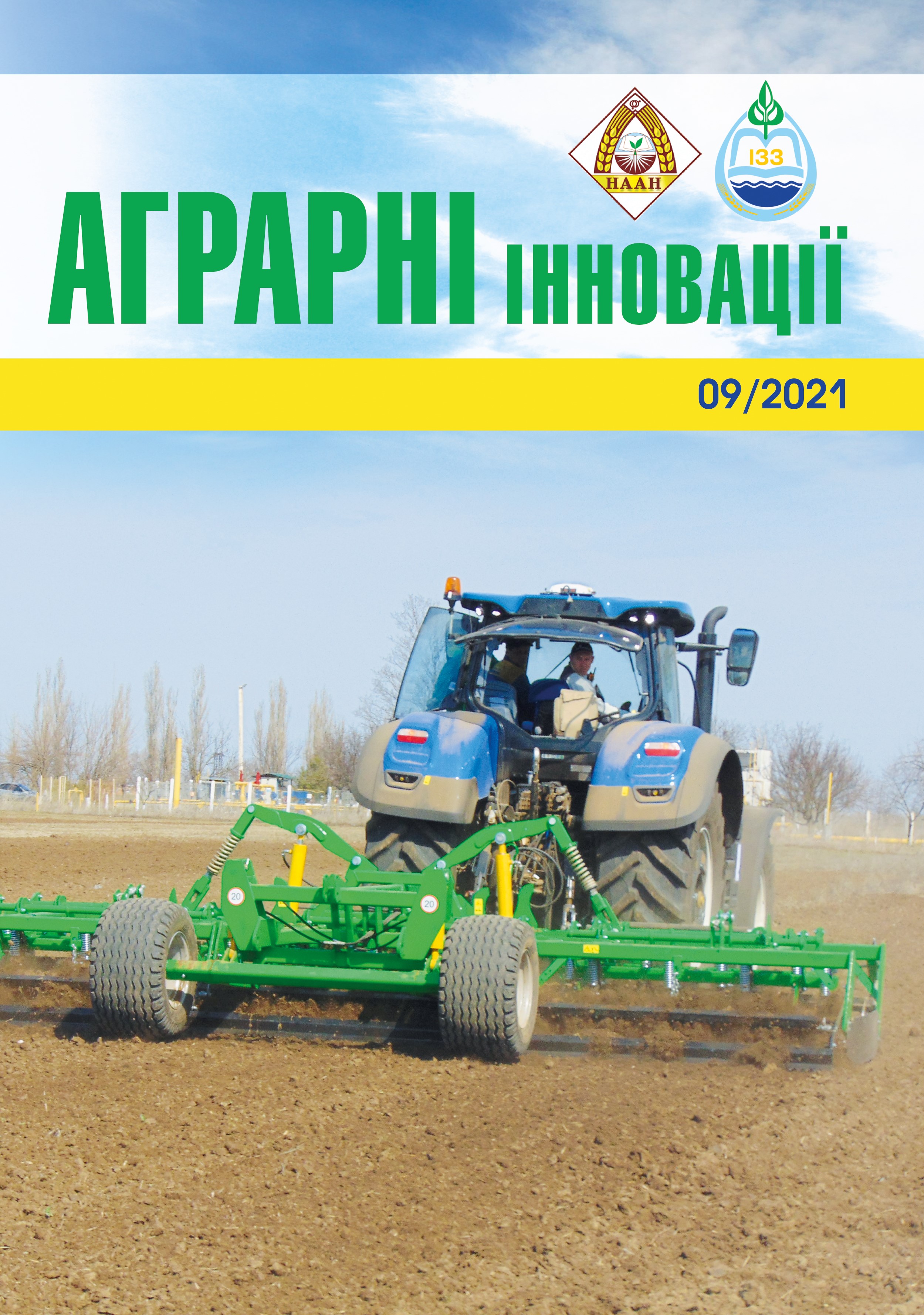Yield and quality of rice grain in the conditions of drip irrigation depending on doses of mineral fertilizers
Abstract
One of the directions of the rice industry development in Ukraine is the introduction of technologies for growing crops outside the rice irrigation systems using the possibilities of drip irrigation. The aim of the work is to study the features of mineral nutrition of rice plants under drip irrigation and to develop an effective system of mineral nutrition for modern rice varieties, which would ensure the realization of their productive potential and ensure the formation of high quality grain. Methods. Field research was carried out during 2016–2019 in the SE of the Rice Institute of NAAS at the drip irrigation landfill. The applied methods are field with accompanying observations and analyzes, laboratory, mathematicalstatistical and theoretical-generalizing. Results. Yields of three rice varieties studied in the experiment varied quite widely from 5.2 t / ha in 2019 in Lazurite variety 10.2 t / ha in the varieties Consul and Marshall in 2017. On average, for three years of research, the maximum grain yield is 6.89 t / ha in the Lazurite variety; 7.80 t / ha in the Consul variety and 8.11 t / ha in the Marshall variety were obtained by applying 100 kg / ha of nitrogen, 40 kg / ha of phosphorus before sowing and 30 kg / ha of nitrogen for the active substance in fertilization by fertigation. At the same time, all rice varieties improved their technological properties – the yield of cereals increased by 1.1–4.3%, and the yield of whole kernels by 1.7-8.2%. The improvement of nitrogen nutrition conditions helped to increase the protein content of grain by 2.1–2.4%. The arsenic content of rice grain decreased more than three times compared to flooded rice, which increases the environmental safety status of rice products. Conclusions. Under the conditions of drip irrigation, for the creation of favorable conditions for growth and development, in particular the use of an efficient food system, rice realizes its productivity potential at a high level. Medium-ripe rice varieties Consul and Marshall are the most suitable for growing conditions without constant flooding.
References
2. Технологія вирощування рису з врахуванням вимог охорони навколишнього середовища в господарствах України / Дудченко В.В. та ін. Херсон: вид-во «Наддніпряночка», 2008. 71 с.
3. Технологія вирощування рису на краплинному зрошенні в Україні / В.В. Дудченко та ін. Херсон: Грінь Д.С., 2016. 32 с.
4. Adusumilli N.R. Drip irrigation system for higher resources use efficient rice production with reduced global warming potential – a review. 4th International Rice Congress 27 Oct. 1 Nov. Bangkok, Thailand. 2014.
5. Bennett J., Khush G.S. A strategy for enhancing salt tolerance in crops through molecular breeding. J. Crop Prod. 2002. № 7. (In press.)
6. Bouman B.A.M., Hengsdijk H., Hardy B., Bindraban P.S., Tuong T.P., Ladha J.K. Water-wise rice production. Proceedings of the International Workshop on Waterwise Rice Production, 8–11 April 2002, Los Banos, Philippines. Los Banos (Philippines): International Rice Research Institute. 356 p.
7. Bouman B.A.M., Humphreys E., Tuong T. P., Barker R. Rice and water. Adv. Argon. 2007; 92:187–237. doi: 10.1016/S0065-2113(04)92004-4.
8. Bouman B.A.M., Peng S., Castaneda A., Visperas R.M. Yield and water use of irrigated tropical aerobic rice systems. Agric. Water Manage. 2005; 74:87–105. doi: 10.1016/j.agwat.2004.11.007.
9. Bouman B.A.M., Tuong T.P. Field water management to save water and increase its productivity in irrigated rice. Agric. Water Manage, 2001; 49:11–30. doi: 10.1016/S0378-3774(00)00128-1.
10. Bozkurt Çolak Y. Comparison of aerobic rice cultivation using drip systems with conventional flooding. The Journal of Agricultural Science, 2021; 11.1017/S0021859621000824, (1–13).
11. Fitz W.J., Wenzel W.W. Arsenic transformation in the soil-rhizosphere-plant system: fundamentals and potential application to phytoremediation. J. Biotechnol. 2002; 99: 259–278.
12. Pinheiro B.D.S., Castro E.D. M.D., Guimaraes C.M. Sustainability and profitability of aerobic rice production in Brazil. Field Crops Res, 2006; 97:34–42. doi: 10.1016/j.fcr.2005.08.013.
13. Saito K., Linquist B., Atlin G.N. Response of traditional and improved rice cultivars to N and P fertilizer in northern Laos. Field Crops Res, 2006; 96:216–223. doi: 10.1016/j.fcr.2005.07.003.
14. Satyanarayan A., Thiyagarajan T.M., Uphoff N. Opportunities for water saving with higher yield from the system of rice intensification. Irrigation Science, 2007. № 25. рр. 99–115.
15. Tuong T.P., Bouman B.A.M. Rice production in waterscarce environments, In: Proc. Water Productivity Workshop, 12–14 November 2001, Colombo, Sri Lanka. International Water Management Institute, Colombo, Sri Lanka, 2003.






